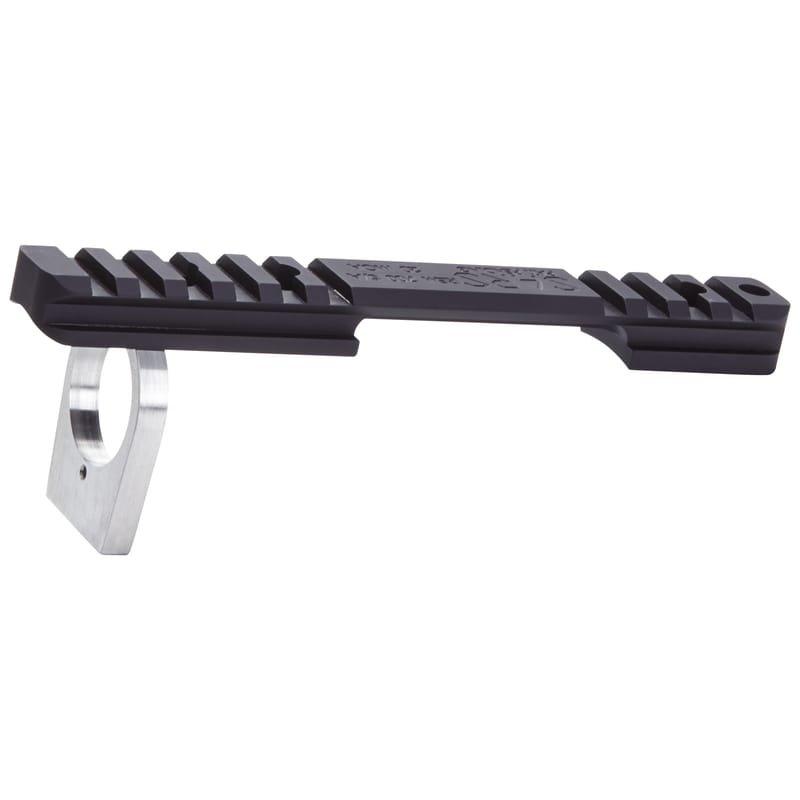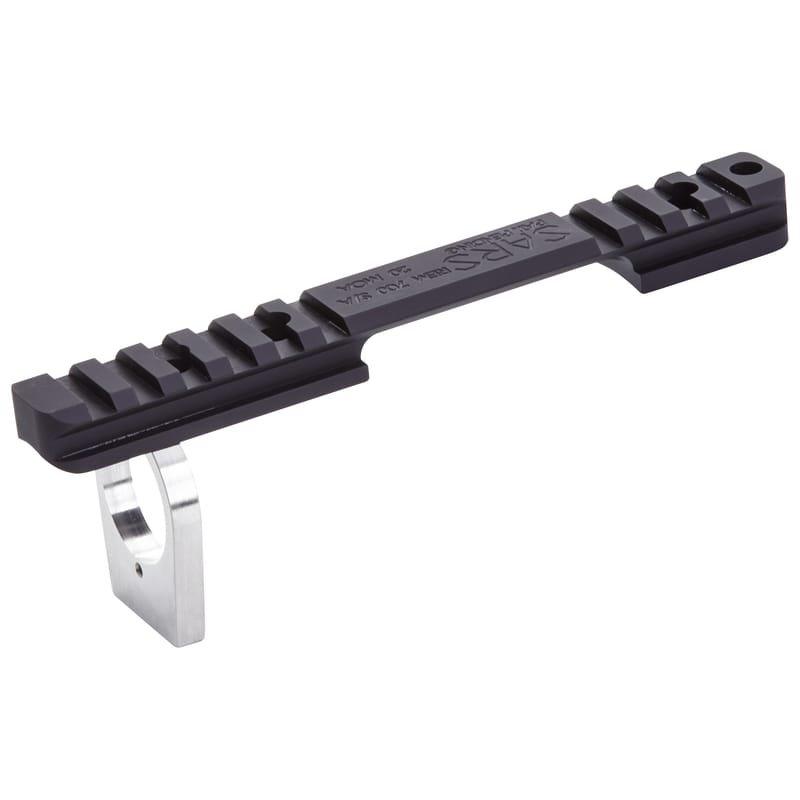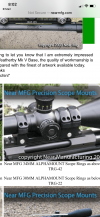I'll start this thread by saying that I am in no way bashing on the manufactured of the scope mount I used, it is in no way the mounts fault, but instead my fault for not choosing the appropriate mounting solution for the extreme situation I put it in. The mount I used is a quality piece of kit, and I have used it on other rifles with good results.
I just discovered this yesterday, and I am frustrated it took me this long, and I should have known better, but now I do.
I have a relatively light .338 Norma Magnum, all in with 3 rounds ready to hunt, it weighs 9.6 lbs. It has a MBM titanium 5 port Beast brake, which does a fantastic job of managing the rifle, I spotted every impact last year during hunting, from 180 yards to 883. I would put the felt recoil to about that of a heavy .308 winchester, shooting side by side with my fathers 10.5 lb AR-10 in .308, it is very similar. However, when building this rifle, I knew that the entire amount of recoil would be felt by my optic mounting solution, as that is initiated prior to the muzzle brake doing it's thing and slowing down the recoil. That recoil comes out to just shy of 50 ft-lbs and about 18 fps with my loads, so pretty significant.
Because of that, I upgraded my base screws from 6-48 to 8-40. When choosing a mount, I wanted to keep weight down, but also keep a solid mount. This is where I messed up. I chose to go with a DNZ 1 piece base/4 screw ring combo, as seen in the photos. I bedded the mount to the receiver with devcon for added strength and to keep everything perfectly strait. Next, I bedded the March 2.5-25x52 into the rings, again with devcon. I polished kiwi shoe polish into the scope tube until it was a high polish, an extremely thin layer to ensure the best bedding possible. The bed job came out great, I could push the scope down into the lower rings and nearly lift the rifle up with only the fit, not even having the ring caps on, so I was very confident that after proper torqueing of the bedded ring caps, the scope wasn't going anywhere. In checking the March scope manual, it only stated that usual torque for ring caps is 15-20 in-lbs, but will vary based on manufacturer. The DNZ rings stated a max of 25 in-lbs, so I torqued to 20 in-lbs as that was the top end listed in the scope manual.
During load development, the rifle would shoot very good, but have an occasional flyer, never bad, usually within .75 MOA of my group, but nevertheless, it would happen. I chalked it up to my shooting, groups were still always under 1 MOA, most of them falling well under half MOA. During my hunting season last year, all was going well, the rifle was used for several pronghorn out to just under 700 yards with stellar performance, that is until my mule deer.
I hiked in to one of my honey holes at first light, and like they were on que, I spotted a group of bucks out in a field about 570 yards off. There was one nice buck in the group that was a 160 class buck, so I decided to take him. It was first light, sun wasn't up and there was nearly no wind, so since I was shooting across a canyon, I doped for a 2 mph L to R wind, going up the canyon. I settled in behind the rifle, lined up on the buck, and took a perfect shot. As I was waiting for impact, I knew that was a dead buck for sure, until I saw the impact high right, over his back and back by his flank. I knew this wasn't right, so I adjusted to my impact quickly. The buck ran about 60 yards and stopped, pretty close to the same range. I lined up again, took another shot and placed a perfect quartering to shoulder hit, and dumped him in his tracks. However, I had to adjust 2 MOA to the left and down almost the same for the hit. This was a verified load, and I was confused. After I got the buck off the mountain, I went to the range and shot it. Sure enough, I was hitting around 1.5 MOA high, and 2 MOA right. I re-zeroed, shot a confirmation group, and shot some steel at range, and everything seemed good. I was confused why it happened in the first place, but everything seemed good again.
Then, I went on my elk hunt. We got on to a large herd, and I picked out a 320ish bull. Range was 883, so I knew I needed to take my time, but thankfully I had plenty. There was a pretty stout ground wind, but the wind out in the canyon was consistent, around 5 mph left to right, and between mirage and debris floating in the air, it was relatively easy to read the wind. I lined up my shot, and fired. Again, I saw the impact high right, almost the same place, over his back and back near the flank. I dialed to my impact, he moved a short distance laterally and stopped. I lined up a second shot, and on impact dumped him, the bullet hit right at the neck shoulder junction. Then, my season was over.
In the off season I began doing load development on a different bullet. The other day, I took a picture of my rifle in a new tripod I got. I was looking at the photo, adoring my beautiful rifle, when I noticed something off. The proportions of the scope/mount didn't look right, and there seemed to be more room between the barrel and scope bell than there previously was. I dug up a photo of my rifle from right before my 2020 season, and saw the difference in the photos below.
Before season, 2020 -
View attachment 277949
Just a few days ago -
View attachment 277950
Notice the difference where the scope level is in relation to the turret body, as well as where the rear ring is in relation to the eye piece. The scope had scooted forward nearly a quarter of an inch in around 100 rounds. While I can't say 100% that is what caused my issues during hunting season this year, I wouldn't be surprised if that was the cause. So, to remedy this, here are my plans -
I ordered a 20MOA rail. I am going to bed and pin it to the receiver. While the pinning may not be necessary, it will be added insurance on that aspect of the mount system. The rail has an integrated level, making room so that the entire scope tube can be used for....
2 sets (4 rings) of Seekins precision rings. I will put 2 of the rings pushing forward, 2 of them pushing rearward, to counteract the thrust created by the muzzle brake. I believe this is what Kirby Allen does on his rifles. I will bed the scope into the rings again, but this time I will not use release. The scope will still come out if needed, at most some heat can be used to help them release.
This is the strongest most secure method I can think of to keep the scope in place. I also plan on marking the scope tube with a marker in an inconspicuous location, so that I can monitor for any movement of the tube in these rings, though if it does, I'm not really sure what more I can do to prevent it, but at least I will know.
I will update this thread as time progresses, but I figured that since I had to learn the hard way, I would admit my faults and hopefully help the next fella to prevent this issue. Just go overkill from the start with big boomers like this, just like the professionals do (there is a reason they do it) and you will not have the problems.
Thanks all, and good shooting.




